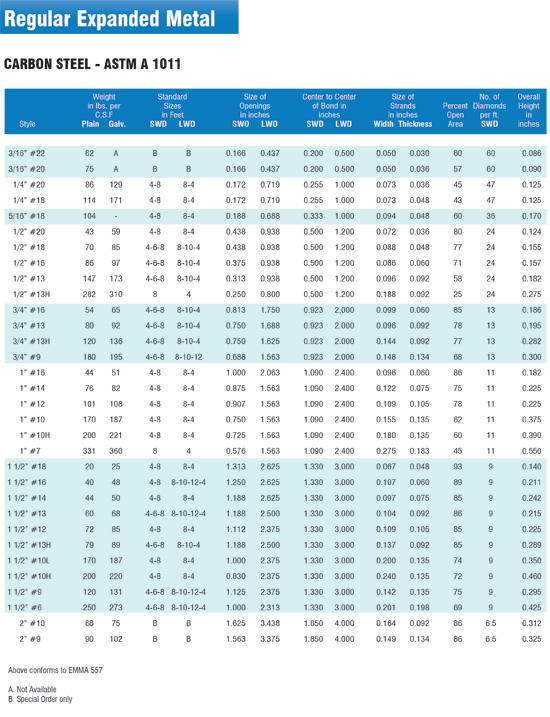Expanded Metal Mesh in Architecture
Specifying Expanded Metal Mesh
Expanded metal mesh will likely be most appropriately specified based on its use in a building. So, following the CSI specification format, it may be specified under 05 70 00 Decorative Metal. However if it used for Building Cladding it would show up in 07 40 00 or for Exterior Sun Control Devices it may be specified in 10 71 13. Coordinating the most appropriate place to specify the mesh will obviously depend on the singular or multiple uses employed in any particular building.
The first step in the design of a product or fabricated assembly incorporating expanded metal is to select the appropriate expanded metal pattern, keeping in mind various product characteristics which may influence that choice. For example, the strength and rigidity of expanded metal is determined by Long Way of Diamond.
Diamond direction also affects air deflection and diffusion, concealment properties and aesthetic appearance. When determining which expanded metal products to use and specify, it is best to review the available options from manufacturers and assess the possibilities to select the most appropriate mesh that is consistent with the building use.
Once the basic parameters are determined, then within each individual specification section the following items will need to be addressed:
Scope and Quality Assurance
The scope of the expanded metal mesh work within a particular specification section will need to be identified particularly if there are other products used for the same purpose in the building. As described earlier, the NAAMM standard EMMA 557-12 “Standards for Expanded Metal” should be referenced as the industry standard for expanded metal mesh. Note that while the manufacture of expanded metal mesh is fairly precise, the standard identifies the normal and acceptable tolerances for flatness, camber, weight, and squareness. For example, the manufacturing tolerance of regular and flattened expanded metal is indicated in the standard as:
- SWD (short way of diamond) -Shall not vary greater than -0” +1/4 in. per foot of width (Example: 48” could be 49”)
- LWD (long way of diamond) -Shall not vary greater than -0” +1/4 in. per foot of length (Example: 96” could be 98”)
- Note: Generally all stock or machine run sheets will have closed diamonds on all four sides. Beyond that, the common standards for base metal such as ASTM standards or similar will apply.
 |
Expanded metal mesh is available in a full range of standard and specialty metals as may be appropriate to a particular architectural design. Image courtesy of AMICO |
Material and Product Type Selections
The variables in the expanded product include the following, each of which will need to be specified or identified:
Metal Type and Thickness: Starting with the specific metal type, those commonly used in the manufacture of expanded metal can include but are not necessarily limited to the following list with the corresponding ASTM references noted. The desired choice should be selected and identified and the thickness of the base metal determined for the application:
- Steel
- Cold-rolled (ASTM A 366/A 366M, A 611).
- Hot-rolled, and hot rolled - pickled and oiled (ASTM A1008 / A1008M, A1011 / A1011M).
- Galvanized before expanding (ASTM A 653/A 653M), or Electrogalvanized (ASTM A 879).
- Hot Dip Galvanized (ASTM A123/ A123M)
- Pre-finished-painted or plated.
- Aluminum
- Most common alloys 3003-H14, 5005-H34 and 5052-H32 (ASTM B 209).
- Pre-painted.
- Anodized.
- Stainless Steel
- Types 304 and 316 (including extra low-carbon grades) (ASTM A 666).
- Most 400 types ASTM A 176)
- 309 and 310 (ASTM A 167).
- Other Metals
- Copper, nickel alloys, CP titanium (grades 1 and 2), precious metals.










